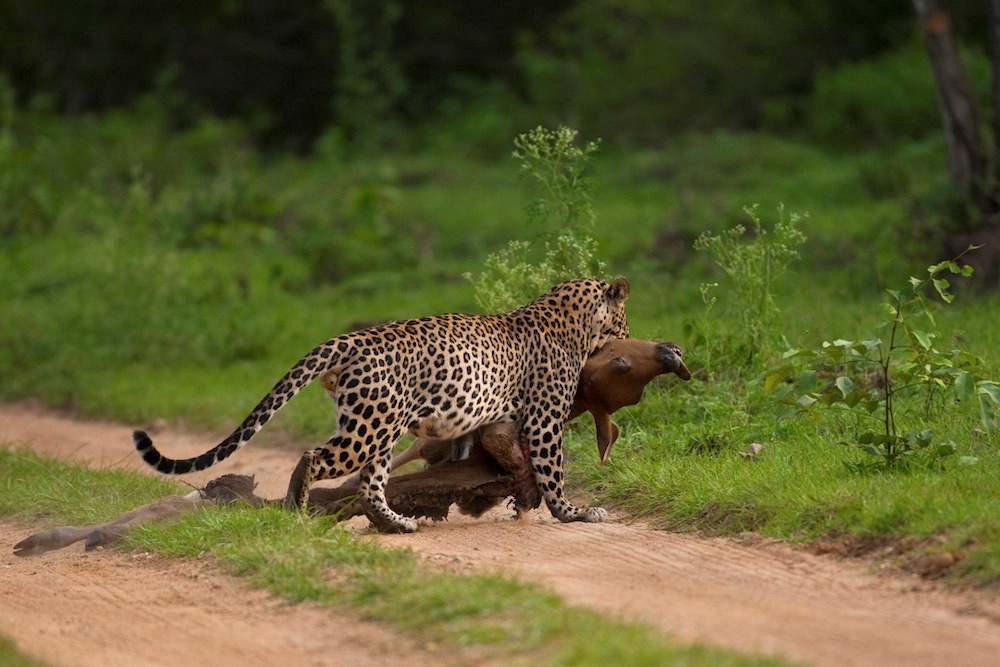Dramatic Hunting Leopard Caught on Camera

A leopard caught on camera dragging the grisly remains of its prey across the ground turns out to have posed for the cameras before.
Researchers at the Wildlife Conservation Society analyzed the striking photograph of a male leopard carrying a massive Indian bison calf in its jaws and found that the same leopard was once photographed in 2004.
The new photograph shows the leopard carrying a guar, or bison, calf. Leopards use their strong jaws to haul huge prey into trees for safe-keeping. In this case, the dead calf likely weighed about 220 pounds (100 kilograms), while the leopard might weigh between 110 pounds (50 kg) and 150 pounds (70 kg).
Photographer Vinay S. Kumar snapped the photo at India's Bandipur Tiger Reserve. Kumar submitted the photo to the not-for-profit Conservation India, triggering a CSI-like chain of investigation as to the identity of the wild cat. Conservation India passed the photograph to the Wildlife Conservation Society's India Program, which maintains a database of camera-trap photos, including hundreds of leopard photographs.
Using computer software that compares the spot patterns of the leopards, the researchers were able to identify the leopard as Bandipur Leopard #123 (BPL-123 for short). The leopard was first caught on film in December 2004, the agency reported.
"Photographs can help track the life histories of individual tigers — and as can be seen in this case, leopards," Ullas Karanth, director of WCS's India Programs, said in a statement. "In this context, even photographs taken by tourists can be valuable in providing additional information. As this particular 'catch' shows, BPL-123 is thriving, and his superb condition is perhaps an indicator of the health of his habitat too."
Follow Stephanie Pappas on Twitter @sipappas or LiveScience @livescience. We're also on Facebook & Google+.
Get the world’s most fascinating discoveries delivered straight to your inbox.

Stephanie Pappas is a contributing writer for Live Science, covering topics ranging from geoscience to archaeology to the human brain and behavior. She was previously a senior writer for Live Science but is now a freelancer based in Denver, Colorado, and regularly contributes to Scientific American and The Monitor, the monthly magazine of the American Psychological Association. Stephanie received a bachelor's degree in psychology from the University of South Carolina and a graduate certificate in science communication from the University of California, Santa Cruz.


